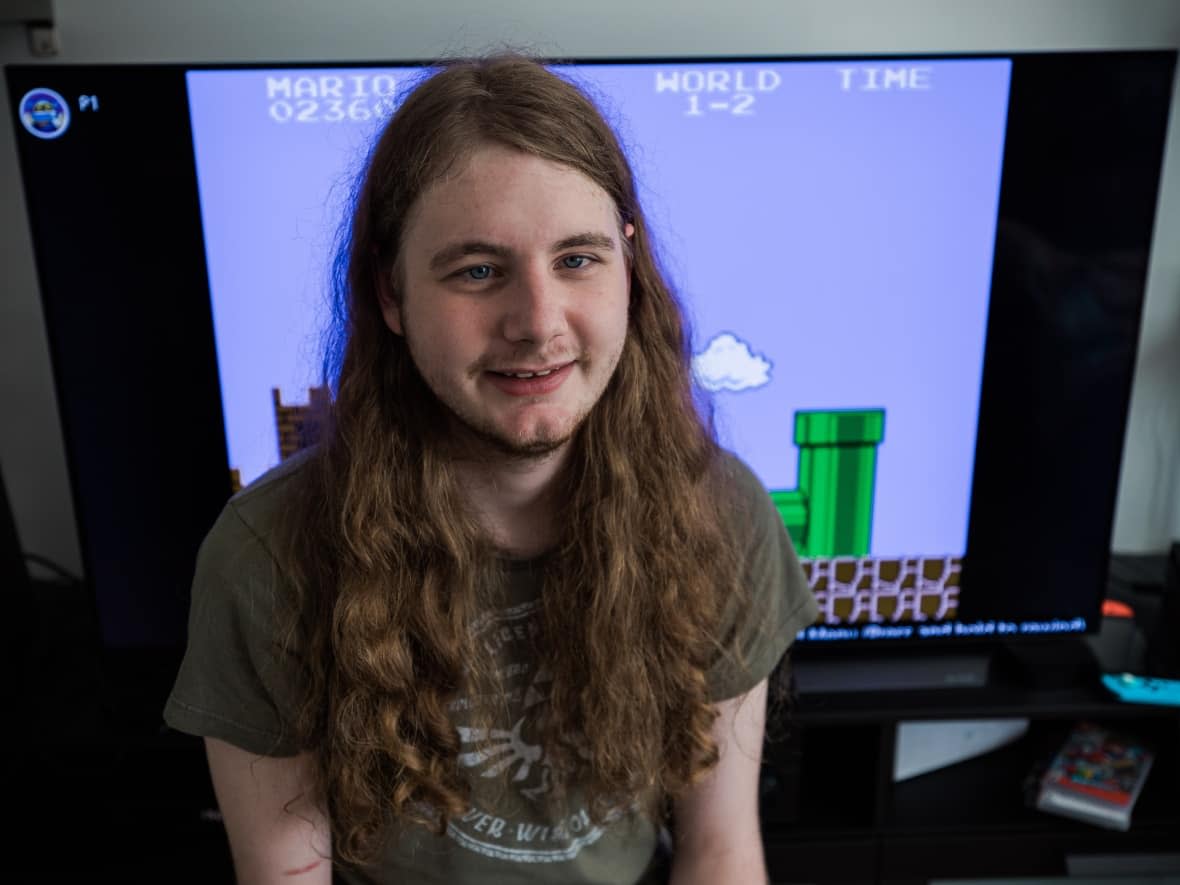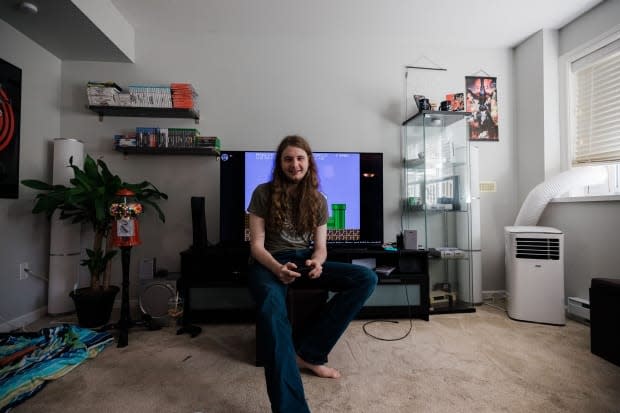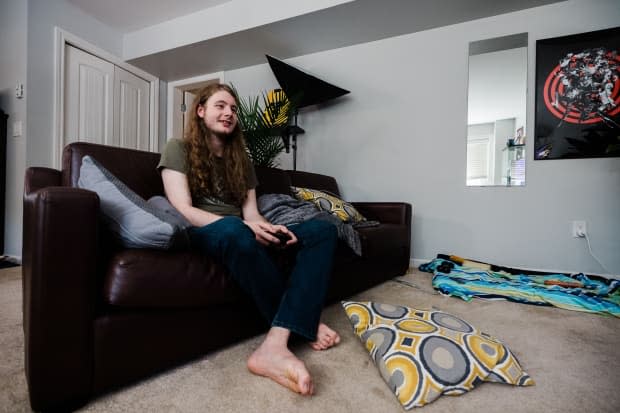How this partially sighted B.C. gamer learned to play Super Mario

Millions around the world play the Super Mario video games — but imagine playing them without being able to see them.
That's the experience of 21-year-old Jalen Berg, a partially sighted gamer from Langley, B.C.
Berg grew up with cone-rod dystrophy, an inherited eye disorder that affects the retina's light-sensitive cells and causes people to lose their vision over time.
He is legally blind but can still see certain things. His particular type of condition is on the colour-blindness spectrum, he explained, making it hard for him to see things that are similarly coloured or shaded.
"It's hard. I live in a world for people who can see better and farther than I can and things are designed for those kinds of people," he told CBC News.
He describes what he sees when he plays video games as "a bunch of moving coloured blobs" — yet he has figured out how to play Super Mario by learning the patterns of the games and using his hearing.
WATCH | Jalen Berg describes how he plays video games partially sighted:
Berg started playing video games when he was a young kid and says this helped him work around some of the hurdles of playing with vision loss — and turned a hobby into a passion.
"I think 'into' video games is a bit of an understatement … they are my passion at this point," said Berg, who owns several consoles and says that although he plays a variety of Mario games, Super Mario Sunshine is his favourite.
Repetition, memorizing patterns
Berg says it's taken a lot of trial and error throughout the years to get to where he is now. As frustrating as it's been at times, he says, repetition and memorizing patterns on his controller have helped him hone his skills.
"What it comes down to is just years and years and years of just punching the same wall over and over," he said.
While sighted people are able to see the entire screen while they play, Berg says his attention instead shifts around the screen. That means he usually misses things happening around the edge.
That's why it's important that he always plays with the sound on, so he can hear and recognize familiar noises that go along with different moves in the game.
"You don't need to see the result. You just need to hear the sound to know that that event has happened," he said.
"A koopa shell bouncing, that's a pretty basic example right?" he says, referring to a rare object in the Mario games that can be be used as a projectile. "It bounces, you hear the 'boop' sound — you don't need to see."

More accessible options needed
Adrian Bolesnikov, who is doing a master's degree in human-computer interaction at Carleton University, has studied accessibility in the gaming industry.
He says Berg's experience of adapting the way he plays is very common for people within the gaming community.
"There is not necessarily a lot of common resources for accessible game development and game modification," Bolesnikov said.
While there are some options out there for accessible gaming — for example, the game The Last of Us Part II was applauded recently for having over 60 accessibility settings, Bolesnikov says — they aren't often as well known.
He added that stories like Berg's are important to "keep the conversation going" and allow others with similar experiences to see what is possible.
"The community knows what they need and they know how to do it. So we should be able to give them the resources to kind of show us how we can help," Bolesnikov said.

Berg echoed that sentiment, saying it's important the industry works to make gaming more accessible. He says one of the most beneficial aspects of gaming for him has been the community he's gotten to know.
In a bid to encourage more accessibility, Berg and a friend make YouTube videos where they talk about his disability and how he's adapted to gaming.
"The more people that can easily enjoy video games, I think that is just the best thing for everyone.… You get more perspectives. You get more people to just have fun with and talk about some of your favourite stuff," he said.


